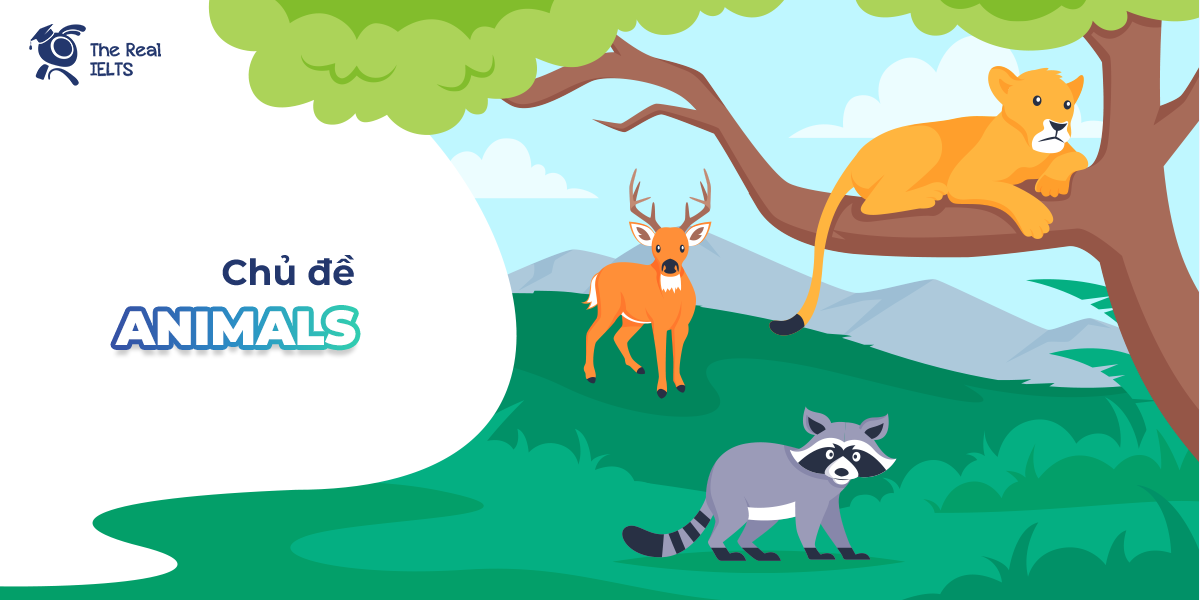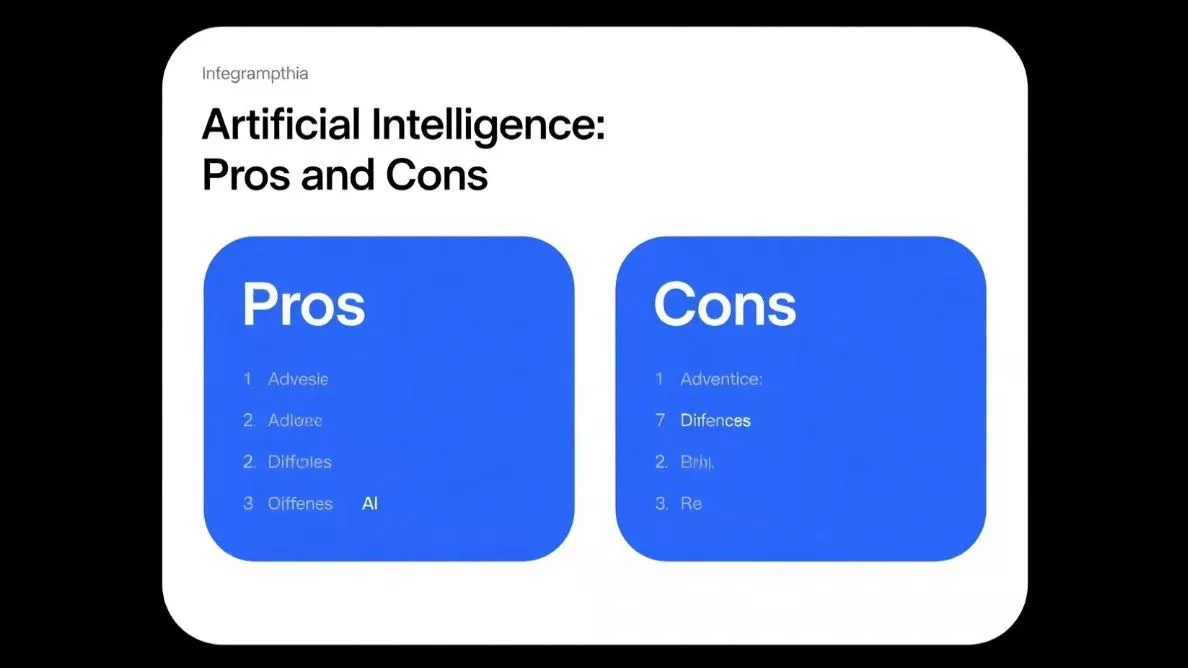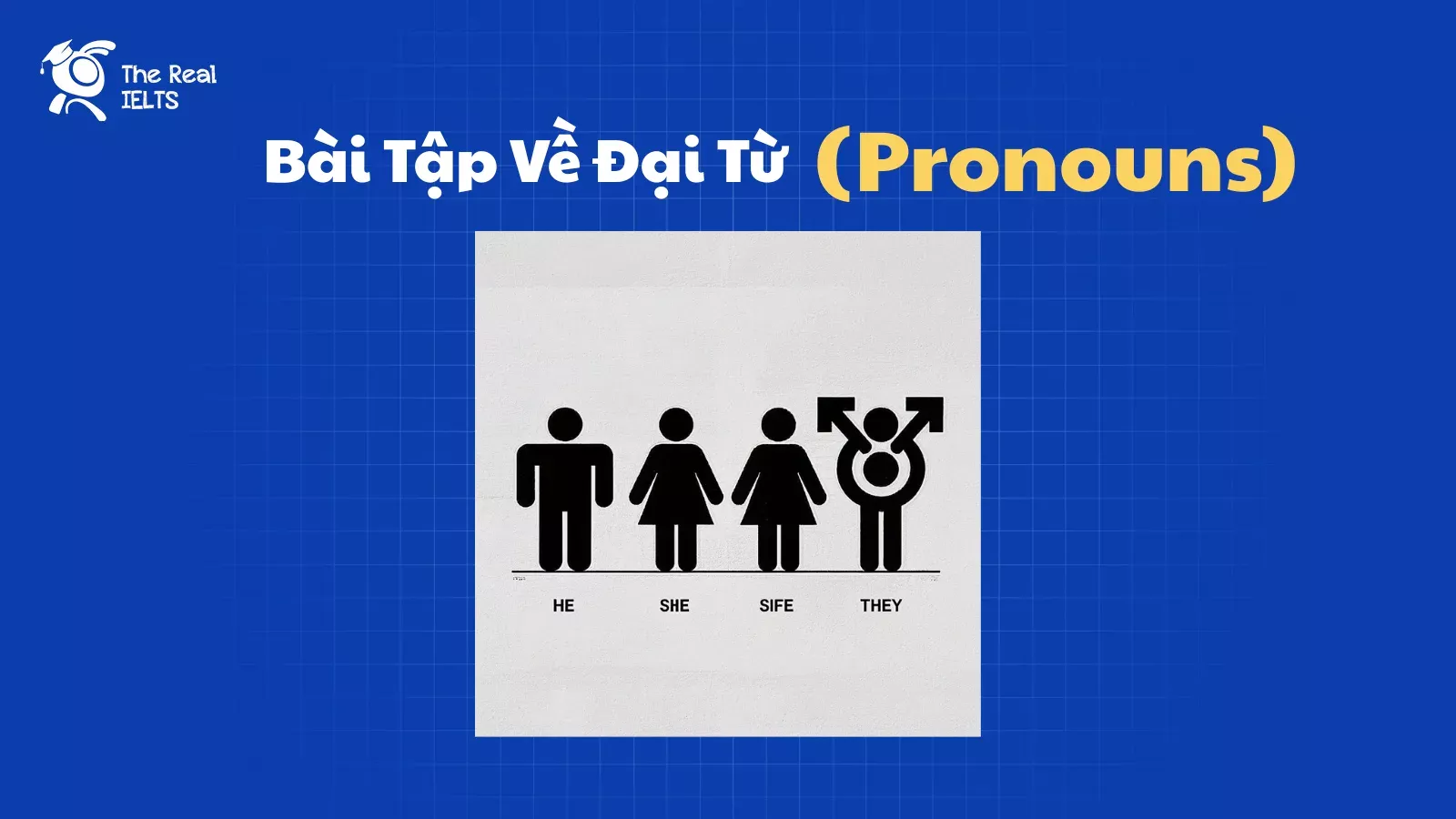100 từ vựng chủ đề Animals được sử dụng cho các chương trình tiếng Anh cơ bản, vì series bài viết 100 từ vụng các chủ đề được sử dụng dành cho 0 đến 2.0 band IELTS. Hy vọng các bạn dành thời gian hợp lý để luyện tập.
Đọc thêm 20 chủ đề luyện Reading và từ vựng để thi IELTS.
100 từ vựng chủ đề Animals
| Animal | Động vật | There are many different types of animals in the world. | Có nhiều loại động vật khác nhau trên thế giới. |
| Mammal | Thú nuôi | A mammal is a warm-blooded vertebrate characterized by having mammary glands. | Động vật có vú là động vật có nhiệt đới có xương sống được đặc trưng bởi việc có tuyến vú. |
| Reptile | Bò sát | Reptiles are ectothermic vertebrates covered in scales or bony plates. | Bò sát là động vật có xương sống nhiệt đới được bao phủ bởi vảy hoặc các lá chắn bony. |
| Amphibian | Lưỡng cư | Amphibians are cold-blooded vertebrates that typically lay eggs in water and undergo metamorphosis. | Lưỡng cư là động vật có xương sống nhiệt đới thường đẻ trứng trong nước và trải qua quá trình biến hình. |
| Bird | Chim | Birds are warm-blooded vertebrates with feathers, beaks, and lay hard-shelled eggs. | Chim là động vật có vú nhiệt đới với lông, mỏ và đẻ trứng vỏ cứng. |
| Fish | Cá | Fish are cold-blooded aquatic vertebrates with gills and fins. | Cá là động vật có xương sống nhiệt đới sống trong nước có mang và vây. |
| Insect | Côn trùng | Insects are small invertebrate animals with three body segments and six legs. | Côn trùng là loài động vật không xương sống nhỏ có ba phần cơ thể và sáu chân. |
| Pet | Thú cưng | Many people keep pets such as dogs or cats for companionship. | Nhiều người nuôi thú cưng như chó hoặc mèo để làm bạn. |
| Wild | Hoang dã | Wild animals live freely in natural environments without human intervention. | Động vật hoang dã sống tự do trong môi trường tự nhiên mà không có sự can thiệp của con người. |
| Domesticated | Nuôi trong nhà | Domesticated animals have been adapted over time to live alongside humans. | Động vật thuần hóa đã được chinh phục theo thời gian để sống chung với con người. |
| Predator | Thú săn mồi | Predators are animals that hunt and kill other animals for food. | Thú săn là những loài động vật săn mồi và giết chết các loài động vật khác để lấy thức ăn. |
| Prey | Con mồi | Prey are animals that are hunted and killed by other animals. | Con mồi là những loài động vật bị săn và giết chết bởi các loài động vật khác. |
| Herbivore | Thú ăn cỏ | Herbivores are animals that primarily eat plants. | Thực vật ăn cỏ là những loài động vật chủ yếu ăn thực vật. |
| Carnivore | Thú ăn thịt | Carnivores are animals that primarily eat other animals. | Thú ăn thịt là những loài động vật chủ yếu ăn thịt của loài động vật khác. |
| Omnivore | Thú ăn tạp | Omnivores are animals that eat both plants and animals. | Thú ăn tạp là những loài động vật ăn cả thực vật và động vật. |
| Endangered | Có nguy cơ tuyệt chủng | Many species are endangered, facing a high risk of extinction. | Nhiều loài đang trong tình trạng nguy cơ tuyệt chủng cao. |
| Extinct | Tuyệt chủng | Some species have become extinct, meaning they no longer exist. | Một số loài đã tuyệt chủng, có nghĩa là chúng không còn tồn tại nữa. |
| Species | Loài | The Amazon rainforest is home to a vast array of species, many of which are yet to be discovered. | Rừng mưa Amazon là nơi trú ngụ của một loạt các loài, trong đó có nhiều loài vẫn chưa được khám phá. |
| Habitat | Môi trường sống | Polar bears rely on the Arctic habitat for their survival, as it provides them with access to food and shelter. | Gấu Bắc Cực phụ thuộc vào môi trường sống ở Bắc Cực để tồn tại, vì nó cung cấp cho chúng lối vào thức ăn và nơi trú ẩn. |
| Ecosystem | Hệ sinh thái | Coral reefs are intricate ecosystems that support a diverse range of marine life. | Rạn san hô là các hệ sinh thái phức tạp hỗ trợ một loạt các loài sinh vật biển đa dạng. |
| Wildlife | Động vật hoang dã | National parks play a crucial role in preserving wildlife and protecting natural habitats. | Các công viên quốc gia đóng vai trò quan trọng trong việc bảo tồn động vật hoang dã và bảo vệ môi trường sống tự nhiên. |
| Zoology | Động vật học | Zoology is the scientific study of animals, their behavior, and physiology. | Động vật học là nghiên cứu khoa học về động vật, hành vi và sinh lý của chúng. |
| Biology | Sinh học | Biology encompasses the study of living organisms and their interactions with each other and their environments. | Sinh học bao gồm việc nghiên cứu các hệ thống sống và tương tác của chúng với nhau và môi trường sống của chúng. |
| Conservation | Bảo tồn | Conservation efforts are essential to safeguarding endangered species and their habitats from further destruction. | Các nỗ lực bảo tồn là rất quan trọng để bảo vệ các loài có nguy cơ tuyệt chủng và môi trường sống của chúng khỏi sự phá hủy tiếp theo. |
| Protection | Bảo vệ | Governments implement various policies to ensure the protection of vulnerable ecosystems. | Chính phủ thực hiện các chính sách khác nhau để đảm bảo sự bảo vệ của các hệ sinh thái dễ tổn thương. |
| Biodiversity | Đa dạng sinh học | Biodiversity refers to the variety of life forms found in a particular habitat or ecosystem. | Đa dạng sinh học đề cập đến sự đa dạng của các hình thức sống được tìm thấy trong một môi trường sống hoặc hệ sinh thái cụ thể. |
| Adaptation | Sự thích nghi | Adaptation is a key survival strategy for species to thrive in changing environments. | Sự thích nghi là một chiến lược sinh tồn quan trọng để các loài sống sót trong môi trường thay đổi. |
| Migration | Di cư | Birds undertake long migrations to seek suitable breeding grounds and food sources. | Chim thực hiện các cuộc di cư dài để tìm kiếm các khu vực sinh sản và nguồn thức ăn phù hợp. |
| Hibernation | Ngủ đông | Bears enter a state of hibernation during winter to conserve energy and survive harsh conditions. | Gấu vào trạng thái ngủ đông vào mùa đông để tiết kiệm năng lượng và sống sót dưới điều kiện khắc nghiệt. |
| Camouflage | Làm giảm độ nhiều | Many animals use camouflage as a defense mechanism to blend into their surroundings and avoid predators. | Nhiều loài động vật sử dụng sự ngụy trang như một cơ chế phòng thủ để hòa mình vào môi trường xung quanh và tránh xa kẻ săn mồi. |
| Nocturnal | Về đêm | Owls are nocturnal creatures, preferring to hunt and be active during the night. | Cú là loài động vật hoạt động vào ban đêm, thích săn mồi và hoạt động vào ban đêm. |
| Diurnal | Ban ngày | Diurnal animals, such as squirrels and songbirds, are most active during the day. | Động vật ban ngày, như sóc và chim hót, hoạt động nhiều nhất vào ban ngày. |
| Feral | Hoang dã | Feral cats are domestic cats that have returned to a wild state, often living independently of human care. | Mèo hoang là những con mèo nhà đã trở lại trạng thái hoang dã, thường sống độc lập khỏi sự chăm sóc của con người. |
| Exotic | Lạ | Exotic species introduced to new environments can disrupt local ecosystems and threaten native wildlife. | Các loài lạ nhập vào môi trường mới có thể làm gián đoạn hệ sinh thái địa phương và đe dọa động vật hoang dã bản địa. |
| Fossil | Hóa thạch | Fossils provide invaluable insight into ancient life forms. | Hóa thạch cung cấp cái nhìn vô giá về các hình thức sống cổ xưa. |
| Aquatic | Sống dưới nước | Aquatic animals are adapted to living in water environments. | Các loài sống dưới nước đã thích nghi với việc sống trong môi trường nước. |
| Terrestrial | Sống trên cạn | Terrestrial creatures thrive on land rather than in water. | Các sinh vật trên cạn phát triển mạnh mẽ trên mặt đất chứ không phải trong nước. |
| Avian | Chim | Avian species encompass various types of birds. | Các loài chim bao gồm các loại chim khác nhau. |
| Marine | Sống dưới nước | Marine life comprises organisms that inhabit the ocean. | Cuộc sống biển bao gồm các cơ thể sống trong đại dương. |
| Arboreal | Sống trên cây | Arboreal animals are specialized for living in trees. | Các loài sống trên cây có chuyên môn để sống trong cây. |
| Carnivorous | Ăn thịt | Carnivorous animals primarily consume meat for sustenance. | Những loài động vật ăn thịt chủ yếu tiêu thụ thịt để duy trì sự sống. |
| Herbivorous | Ăn cỏ | Herbivorous creatures feed mainly on plants. | Những sinh vật ăn cỏ chủ yếu ăn cỏ. |
| Omnivorous | Ăn tạp | Omnivorous animals have a diet that includes both plants and animals. | Những loài động vật ăn tạp có chế độ dinh dưỡng bao gồm cả thực vật và động vật. |
| Predator-prey | Mối quan hệ giữa kẻ săn mồi và con mồi | Predator-prey relationships are fundamental in ecological systems. | Mối quan hệ săn mồi – con mồi là cơ bản trong các hệ sinh thái. |
| Ectotherm | Thân nhiệt bề ngoại | Ectotherms regulate their body temperature through external sources. | Ectotherms điều chỉnh nhiệt độ cơ thể thông qua nguồn nhiệt bên ngoài. |
| Endotherm | Thân nhiệt bên trong | Endotherms generate heat internally to maintain body temperature. | Endotherms tạo ra nhiệt bên trong để duy trì nhiệt độ cơ thể. |
| Cold-blooded | Lạnh máu | Cold-blooded animals rely on external sources to regulate their temperature. | Những loài động vật lạnh máu phụ thuộc vào nguồn nhiệt bên ngoài để điều chỉnh nhiệt độ của họ. |
| Warm-blooded | Nhiệt động | Warm-blooded organisms maintain a relatively constant body temperature. | Các sinh vật máu nóng duy trì một nhiệt độ cơ thể tương đối ổn định. |
| Scale | Vảy | Scales provide protection and support for certain animals, such as reptiles. | Vảy cung cấp bảo vệ và hỗ trợ cho một số loài động vật như bò sát. |
| Feather | Lông | Feathers are characteristic of birds, aiding in flight and insulation. | Lông vũ là đặc điểm của chim, giúp bay và cách nhiệt. |
| Fur | Vỏ | Fur provides insulation and protection for mammals. | Lông cung cấp cách nhiệt và bảo vệ cho động vật có vú. |
| Shell | Vây | Shells are external protective coverings found in some animals like turtles. | Vỏ là lớp bảo vệ bên ngoài được tìm thấy ở một số loài động vật như rùa. |
| Fin | Mỏ | Fins assist marine animals in propulsion and stability. | Vây hỗ trợ động vật biển trong việc đẩy và ổn định. |
| Beak | Vuốt | Beaks are specialized mouthparts found in birds and some reptiles. | Mỏ là các bộ phận miệng chuyên biệt được tìm thấy ở chim và một số loài bò sát. |
| Claw | Móng | Claws are sharp, curved structures used for gripping and hunting in various animals. | Móng vuốt là cấu trúc sắc nhọn cong được sử dụng để nắm và săn mồi ở nhiều loài động vật khác nhau. |
| Hoof | Vuốt | Hooves are hard coverings protecting the feet of certain mammals like horses. | Móng ngựa là lớp vỏ cứng bảo vệ chân của một số loài động vật có vú như ngựa. |
| Tail | Mân | Tails serve various functions such as balance, communication, and propulsion in animals. | Đuôi phục vụ các chức năng khác nhau như cân bằng, giao tiếp và đẩy động vật. |
| Mane | Sừng | Manes are dense growths of hair around the necks of certain mammals, notably horses and lions. | Cổ rậm lông là những đám tóc dày quanh cổ của một số loài động vật có vú, đặc biệt là ngựa và sư tử. |
| Horn | Lỗ tai | The sound of the horn echoed through the forest. | Âm thanh của sừng vang xa qua khu rừng. |
| Antler | Lông | The deer proudly displayed its antlers during mating season. | Con hươu tự hào trưng bày sừng trong mùa giao phối. |
| Tusk | Ngà | The elephant’s tusk was a valuable commodity in the ivory trade. | Răng nước của voi là một hàng hóa quý giá trong thương mại ngà voi. |
| Wing | Nọc độc | The bird spread its wings and soared into the sky. | Con chim mở cánh và bay lên bầu trời. |
| Paws | Độc | The bear’s paws left deep imprints in the soft soil. | Các vuốt của con gấu để lại dấu vết sâu trong đất mềm. |
| Scales | Răng nanh | The snake’s scales shimmered in the sunlight. | Vảy của con rắn lấp lánh dưới ánh nắng mặt trời. |
| Venom | Răng độc | The snake injected its venom into its prey before devouring it. | Con rắn tiêm nọc độc vào con mồi trước khi nuốt chửng nó. |
| Poison | Răng nanh | Consumption of certain berries can result in poisoning. | Việc tiêu thụ một số loại quả có thể dẫn đến ngộ độc. |
| Fangs | Kim đâm | The vampire bat revealed its sharp fangs before attacking. | Con dơi ma cà rồng đã tiết lộ răng nanh sắc bén của mình trước khi tấn công. |
| Stinger | Chân vịt | The bee’s stinger remained lodged in the skin after it had stung. | Đầu nhọn của con ong vẫn còn kẹt trong da sau khi chúng đã châm. |
| Tentacles | Vòi voi | The octopus captured its prey with its long, slender tentacles. | Con bạch tuộc bắt được con mồi bằng những cánh vẩy dài, mảnh mai của nó. |
| Trunk | Chân mang | The elephant used its trunk to grasp objects and suck up water. | Con voi sử dụng vòi của mình để nắm và hút nước. |
| Webbed feet | Mang | Ducks have webbed feet that help them swim efficiently. | Vịt có chân màng giúp chúng bơi hiệu quả. |
| Gills | Xương ngoại bì | Fish rely on their gills to extract oxygen from water. | Cá phụ thuộc vào tuỷ mang để hấp thụ oxy từ nước. |
| Exoskeleton | Nội tạng | Insects have an exoskeleton that provides support and protection. | Côn trùng có xương ngoài cung cấp sự hỗ trợ và bảo vệ. |
| Internal organs | Não | The surgeon carefully examined the patient’s internal organs during the operation. | Bác sĩ phẫu thuật cẩn thận kiểm tra các cơ quan nội tạng của bệnh nhân trong khi phẫu thuật. |
| Brain | Tim | The brain controls all cognitive functions in the body. | Não điều khiển tất cả các chức năng nhận thức trong cơ thể. |
| Heart | Phổi | The surgeon carefully operated on the patient’s heart to repair a defect. | Bác sĩ phẫu thuật cẩn thận thực hiện phẫu thuật trên tim của bệnh nhân để sửa chữa khuyết điểm. |
| Lungs | Dạ dày | The doctor examined the patient’s lungs to assess their breathing capacity. | Bác sĩ kiểm tra phổi của bệnh nhân để đánh giá khả năng hô hấp của họ. |
| Stomach | Gan | Digestive enzymes in the stomach help break down food. | Các enzym tiêu hóa trong dạ dày giúp phân giải thức ăn. |
| Liver | Thận | The liver performs vital functions such as detoxification and metabolism. | Gan thực hiện các chức năng quan trọng như thanh lọc độc tố và chuyển hóa. |
| Kidneys | Xương sống | The kidneys filter waste products from the blood. | Thận lọc các sản phẩm chất thải từ máu. |
| Skeleton | Xương | The skeleton provides structure and support for the body. | Bộ xương cung cấp cấu trúc và hỗ trợ cho cơ thể. |
| Bones | Cơ bắp | Fractures in the bones required immediate medical attention. | Gãy xương cần được chăm sóc y tế ngay lập tức. |
| Muscles | Dây thần kinh | Athletes rely on strong muscles for peak performance. | Các vận động viên phụ thuộc vào cơ bắp mạnh mẽ để đạt hiệu suất tốt nhất. |
| Nerves | Hệ thần kinh | Her trembling nerves betrayed her anxiety before the speech. | Nỗi lo âu của cô ấy đã phản bội trước bài diễn thuyết. |
| Digestive system | Hệ tiêu hóa | A balanced diet is crucial for maintaining a healthy digestive system. | Một chế độ ăn cân đối quan trọng để duy trì hệ tiêu hóa khỏe mạnh. |
| Respiratory system | Hệ hô hấp | Smoking can severely damage the respiratory system over time. | Hút thuốc có thể gây hại nặng cho hệ hô hấp theo thời gian. |
| Circulatory system | Hệ tuần hoàn | The circulatory system ensures that oxygen and nutrients reach all parts of the body. | Hệ tuần hoàn đảm bảo rằng oxy và dưỡng chất đến tất cả các bộ phận của cơ thể. |
| Reproductive system | Hệ sinh dục | Understanding the reproductive system is essential for family planning. | Hiểu biết về hệ sinh sản là quan trọng cho kế hoạch gia đình. |
| Senses | Giác quan | Our senses allow us to perceive the world around us. | Giác quan của chúng ta cho phép chúng ta nhận biết thế giới xung quanh. |
| Sight | Thị giác | The breathtaking view captivated his sight as he gazed out over the valley. | Khung cảnh đẹp ngỡ ngàng làm cho anh ta say mê khi nhìn ra thung lũng. |
| Hearing | Thính giác | His acute hearing allowed him to detect the faintest of sounds in the forest. | Khả năng nghe nhạy cảm của anh ấy cho phép anh ấy phát hiện ra những âm thanh nhỏ nhất trong rừng. |
| Smell | Khứu giác | The enticing aroma wafted into her nostrils, teasing her smell. | Hương thơm quyến rũ trôi vào mũi cô ấy, khiến cho khứu giác của cô ấy bị dụ dỗ. |
| Taste | Vị giác | Different cultures have varied preferences when it comes to taste in cuisine. | Các nền văn hóa khác nhau có sở thích ẩm thực đa dạng. |
| Touch | Xúc giác | The soft fabric provided a pleasing touch against her skin. | Vải mềm mại mang lại cảm giác dễ chịu khi tiếp xúc với da của cô ấy. |
| Communication | Giao tiếp | Effective communication is essential for fostering understanding between individuals. | Giao tiếp hiệu quả là quan trọng để tạo ra sự hiểu biết giữa các cá nhân. |
| Social behavior | Hành vi xã hội | Human beings exhibit complex patterns of social behavior in various settings. | Con người thể hiện các mẫu hành vi xã hội phức tạp trong các môi trường khác nhau. |
| Territoriality | Thái độ thuộc địa | Animals often display territoriality to establish and defend their boundaries. | Các loài động vật thường thể hiện sự địa bạt để thiết lập và bảo vệ biên giới của họ. |
| Mating rituals | Nghi lễ giao phối | Elaborate mating rituals are common in many species. | Nghi lễ giao phối phức tạp là phổ biến trong nhiều loài. |
| Parental care | Chăm sóc con | The swan demonstrated devoted parental care towards its cygnets. | Chúng thiên nga thể hiện sự chăm sóc cha mẹ tận tâm đối với con non của nó. |
| Survival | Sự sống còn | Adaptation is key to survival in changing environments. | Sự thích nghi là chìa khóa để sống sót trong môi trường biến đổi. |
Đọc thêm 100 từ vựng chủ đề Languages.
Bài tập từ vựng chủ đề Animals
- The ____________ kingdom includes a wide variety of organisms, from microscopic insects to massive mammals.
- A ____________ is a warm-blooded vertebrate that gives birth to live young and usually has hair or fur.
- Snakes and turtles are examples of ____________.
- Frogs and salamanders are classified as ____________ because they can live both in water and on land.
- Penguins and eagles are examples of ____________.
- Sharks and goldfish belong to the ____________ category.
- Butterflies and bees are types of ____________.
- Many people keep cats and dogs as ____________.
- Tigers and lions are considered ____________ animals.
- The process of making a wild animal accustomed to human contact is called ____________.
- A ____________ is an animal that hunts and eats other animals.
- Zebras and gazelles are examples of ____________ for many carnivorous animals.
- A ____________ is an animal that eats plants.
- Wolves and lions are examples of ____________.
- Bears and humans are ____________, as they consume both plants and animals.
- The giant panda is an ____________ species, meaning it is at risk of becoming extinct.
- The dodo bird is an example of an ____________ species.
- Polar bears are adapted to their cold ____________ in the Arctic.
- The Amazon rainforest is a diverse and complex ____________.
- ____________ refers to the variety of plant and animal life in a particular habitat.
- The study of animals is called ____________.
- ____________ is a branch of science that focuses on living organisms and their interactions.
- ____________ efforts are crucial to preserving endangered species.
- The ____________ of natural resources is essential for maintaining ecological balance.
- ____________ is the variety of life on Earth.
- Animals develop ____________ to survive in their environments.
- Birds often engage in seasonal ____________ for better feeding opportunities.
- Bears undergo ____________ during the winter months to conserve energy.
- Chameleons use ____________ to blend in with their surroundings.
- Owls are known for being ____________, meaning they are active at night.
- Eagles, on the other hand, are ____________, hunting during the day.
- Cats that live in the wild are referred to as ____________.
- Parrots from distant countries are considered ____________ pets.
- ____________ records provide valuable information about ancient life forms.
- Fish are adapted to living in ____________ environments.
- Lions and tigers are examples of ____________ mammals.
- Dolphins and whales are considered ____________ mammals.
- ____________ animals live in trees.
- Snakes and crocodiles are examples of ____________ reptiles.
- ____________ animals inhabit the ocean.
- Frogs and salamanders are examples of ____________ amphibians.
- ____________ animals have a diet consisting mainly of meat.
- Elephants and giraffes are ____________ animals.
- Humans and other mammals are ____________, maintaining a constant body temperature.
- Snakes and lizards are ____________, relying on external heat sources to regulate their temperature.
- Frogs and fish are examples of ____________ animals.
- The ____________ of a fish helps it move through the water.
- Eagles and hawks have sharp ____________ for capturing prey.
- Horses and cows have ____________ on their feet.
- Lions have a majestic ____________ surrounding their heads.
- Rhinoceroses have one or more ____________ on their noses.
- Deer and moose have ____________ that they shed and regrow annually.
- Elephants have impressive ____________ used for defense and display.
- Narwhals have a long, spiral ____________.
- Bats and birds have ____________ for flying.
- Dogs and cats have ____________ for walking and running.
- ____________ protect certain animals from predators.
- Poisonous snakes have ____________ that can inject venom into their prey.
- Bees and wasps have ____________ for stinging.
- Jellyfish have long ____________ for capturing food.
- Elephants use their ____________ to grasp objects and feed themselves.
- Ducks and swans have ____________ for swimming.
- Fish breathe through ____________.
- Crabs and insects have ____________ that provide support for their bodies.
- The ____________ system controls an animal’s movements.
- ____________ are responsible for transmitting signals in the nervous system.
- The ____________ system ensures oxygen is supplied to the body.
- The ____________ system breaks down food for energy.
- ____________ are essential for supporting the body and protecting organs.
- ____________ and ligaments work together to enable movement.
- The ____________ system is responsible for reproduction.
- Animals use their ____________ to see their surroundings.
- Bats use ____________ to navigate in the dark.
- Dogs have a keen sense of ____________.
- Snakes use their tongue for ____________.
- Humans perceive flavors through their sense of ____________.
- ____________ is crucial for animals to communicate with each other.
- Wolves exhibit complex ____________ within their packs.
- Many animals display ____________ behavior to mark their territories.
- Elaborate ____________ are common in the animal kingdom.
- Penguins engage in ____________ rituals involving elaborate dances.
- ____________ care is essential for the survival of many animal species.
- The instinct for ____________ is strong in many animals.
- The ____________ system involves animals interacting within their social groups.
- The concept of ____________ is central to the long-term survival of a species.
- ____________ animals have adapted to live in cities and urban areas.
- Tigers and lions are examples of ____________ cats.
- The ____________ trade poses a threat to many species.
- Dinosaur fossils provide insights into ancient ____________.
- ____________ animals live in or near water.
- The ____________ environment refers to the ocean.
- Monkeys and sloths are examples of ____________ mammals.
- ____________ animals live in trees.
- Crocodiles and alligators are ____________ reptiles.
- ____________ adaptations help animals survive in specific environments.
- The ____________ of butterflies showcases vibrant colors.
- ____________ birds, such as eagles, have keen eyesight.
- ____________ animals, like snakes, rely on heat from the environment.
- Birds and mammals are examples of ____________ animals.
- The ____________ of animals reflects their evolution and diversity.
Đáp án
- Animal
- Mammal
- Reptile
- Amphibian
- Bird
- Fish
- Insect
- Pet
- Wild
- Domesticated
- Predator
- Prey
- Herbivore
- Carnivore
- Omnivore
- Endangered
- Extinct
- Species
- Habitat
- Ecosystem
- Wildlife
- Zoology
- Biology
- Conservation
- Protection
- Biodiversity
- Adaptation
- Migration
- Hibernation
- Camouflage
- Nocturnal
- Diurnal
- Feral
- Exotic
- Fossil
- Aquatic
- Terrestrial
- Avian
- Marine
- Arboreal
- Carnivorous
- Herbivorous
- Omnivorous
- Predator-prey
- Ectotherm
- Endotherm
- Cold-blooded
- Warm-blooded
- Scale
- Feather
- Fur
- Shell
- Fin
- Beak
- Claw
- Hoof
- Tail
- Mane
- Horn
- Antler
- Tusk
- Wing
- Paws
- Scales
- Venom
- Poison
- Fangs
- Stinger
- Tentacles
- Trunk
- Webbed feet
- Gills
- Exoskeleton
- Internal organs
- Brain
- Heart
- Lungs
- Stomach
- Liver
- Kidneys
- Skeleton
- Bones
- Muscles
- Nerves
- Digestive system
- Respiratory system
- Circulatory system
- Reproductive system
- Senses
- Sight
- Hearing
- Smell
- Taste
- Touch
- Communication
- Social behavior
- Territoriality
- Mating rituals
- Parental care
- Survival
Đọc thêm: Học IELTS từ 0 lên 6.5 mất bao nhiêu tiền?














